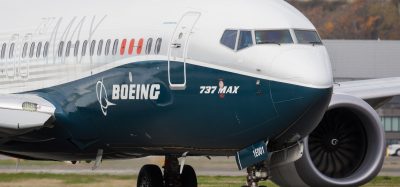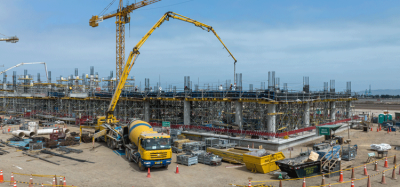London Aviation Options: Crunch time for the capital
- Like
- Digg
- Del
- Tumblr
- VKontakte
- Buffer
- Love This
- Odnoklassniki
- Meneame
- Blogger
- Amazon
- Yahoo Mail
- Gmail
- AOL
- Newsvine
- HackerNews
- Evernote
- MySpace
- Mail.ru
- Viadeo
- Line
- Comments
- Yummly
- SMS
- Viber
- Telegram
- Subscribe
- Skype
- Facebook Messenger
- Kakao
- LiveJournal
- Yammer
- Edgar
- Fintel
- Mix
- Instapaper
- Copy Link
Posted: 19 December 2013 | Daniel Moylan, Mayor of London's Aviation Adviser | No comments yet
Daniel Moylan, the Mayor of London’s Aviation Adviser, puts forward the case for the development of a new hub in the South East to combat London’s air capacity crisis…


Daniel Moylan Major of London's Aviation Adviser


Daniel Moylan Major of London’s Aviation Adviser
Daniel Moylan, the Mayor of London’s Aviation Adviser, puts forward the case for the development of a new hub in the South East to combat London’s air capacity crisis…
The City of London is hugely attractive and growing at a phenomenal rate. A million new people will have moved into the city over the 10 years to 2021, and the housing market is struggling to provide for them. Great minds wrestle with the conundrum of housing in London on a daily basis, and it is never far from the Mayor’s thoughts.
You would be forgiven for being a little confused at this point. This is supposed to be about aviation, not housing. But in London’s case, the two are closely linked.
Heathrow’s beginnings
When Heathrow Airport first began life as a civilian airfield following World War II, London was a smaller place, and Heathrow was a much smaller airport. Over the years it has served the city and the country admirably: bringing the world within reach; connecting us to valuable foreign markets; and helping the financial heart of London to become established as one of the leading global trading centres.
But as the city grew, what was once a very sensible and convenient location for the country’s main airport became swallowed up by London’s suburbs. Further growth of the airport was physically prevented by the construction of houses right up to the perimeter fence, and the surface access into the airport became increasingly cramped and difficult to expand.
Crucially, the problem of airport noise became a deal breaker: a larger local population and ever more aircraft flying overhead earned Heathrow the accolade of worst noise footprint in Europe – quite possibly the world – with over 766,000 people seriously affected by noise from the airport. Recent scientific studies from Imperial College and Kings College London have suggested that more than 100,000 of those people are at significantly increased risk of heart problems as a result. The Mayor of London, alongside the whole of London’s political landscape has made it clear that Heathrow’s growth cannot continue.
A golden opportunity
In the fight to encourage construction of ever more housing in London, one of the obstacles constantly faced is the lack of open, developable space that has the transport infrastructure to make it attractive.
London is growing eastwards and there is a great future in that direction, but much of east London has been left untouched by developers because it lacks adequate connections to the rest of the city. That will change in time, as continued investment in London’s transport network provides the necessary connectivity, but in the meantime we must keep our eyes out for alternative opportunities.
Even Battersea Power Station (and the whole Vauxhall Nine Elms Battersea Opportunity Area) struggled to find its feet until it was given the certainty that the Northern Line Extension would provide it with the transport links needed to fuel development.
Consider now the attractiveness of a 1,200 hectare site, bordered on two sides by major arterial motorways and with four Tube stations, a Crossrail station, and a National Rail station feeding into the Great Western Main Line running west towards Reading. That is the reality of the Heathrow site in 15 years’ time, with the airport relocated elsewhere and the land freed for development. 1,200 hectares is the same size as a small London borough, and work conducted by the Mayor indicates that the site could readily be built-out to provide housing for 250,000 people and more than 40,000 directly related jobs. That would put a major dent in London’s housing difficulties, and would be excellent use of a site that has outlived its usefulness and acceptability as an airport.
Natural progression
There comes a time in every successful company’s life when it reaches the limits of its current business premises. And when that time comes, that company must decide what is best for itself and its shareholders. Usually, the right answer is to consider new opportunities and hunt out new premises which can support continued growth.
On rare occasions, the right path might be for the company to change direction completely, or even to shrink down to a smaller size. But the answer is never to freeze in place, preserved in aspic for all time. Because a company denied flexibility and growth is a company quickly outpaced by its competitors, and one destined for failure.
Heathrow has reached that point. It has grown – wildly, over the years – and we should all be proud of that. The Airport has been a national asset, but now it is a liability and a limiting factor on our country’s economic growth. Day-to-day delays from Heathrow’s congestion and lack of resilience are estimated to lose the UK economy £300-500 million per year, and poor connections owing to lack of hub capacity already costs the UK £14 billion a year in lost trade.
The correct decision for any prudent management and shareholder team is clear: to proactively seek a move to new premises which can enable the growth the airport has earned and that the UK needs, and which would immediately garner the support of politicians from across the establishment.
Heathrow Airport has a bright future. It just isn’t one that is sandwiched between the M4 and the M25.
We need a hub with at least four runways
But do we even need a large hub airport? Wouldn’t it be simpler to just build on the dispersed airport network we already have in the South East? It is certainly a tempting policy. But unfortunately it does not withstand scrutiny. And that’s because we are talking about the problem of how to maintain and develop the UK’s hub airport capacity – the concentration of local demand and transfer passengers that allows airlines to run flights profitably to a wide range of destinations and at high frequencies.
The ‘constellation’ option so merrily put forward by Gatwick and urban planner and architect Sir Terry Farrell does not even attempt to provide that. Rather, it spins a yarn about how London can buck the worldwide trend and the preference of all the long-haul airlines towards the hub model, all the while trying to distract our attention away from the huge commercial windfall Gatwick’s owners would reap if they were granted permission for a second runway whilst Heathrow was prevented from expanding.
The connectivity benefits of a hub are evidentially proven. Analysis by York Aviation indicates that, compared to today, a four-runway hub airport would generate 4,200 additional long-haul flights every week to 205 destinations, with four times the number of routes to cities in the emerging economies and 192 additional flights a week to 14 destinations in China.
Adding a second runway to Gatwick or Stansted Airports, however, would yield nowhere near the connectivity improvements, despite adding the same number of runways to the airports in the South East. It would result in 1,000 fewer long-haul flights to 80 destinations every week, including 70 fewer flights to seven fewer destinations in China, when compared to a four-runway hub.
What is disappointing is that they know this. Gatwick’s Chief Executive, Stewart Wingate, is on record in the Financial Times recognising the obvious – that there are many important destinations which a two-runway Gatwick could never sustain, including to several cities in mainland China. He would have us incrementally grow the smaller airports around London, and in doing so, failing to address the drastic noise pollution issues at Heathrow and costing very large sums through the provision of new road and rail infrastructure to a variety of different locations, all to leave us still disconnected from the vital emerging economies that our businesses and the travelling public need and want to get to. It is self-serving lunacy.
Only a new hub airport can meet our needs
On the assumption that the UK does want to be connected to the new and growing markets around the world, we are left with a choice. It must be a hub, but where should it be built?
It is important to understand that a new four-runway hub airport is a very different proposition to a four-runway Heathrow. While building two new runways and the associated terminal facilities at Heathrow could be marginally cheaper than building four new runways and the terminal capacity required at a new hub, a new hub airport would provide much better value for money and offer many more advantages.
A well-planned site with four fullyindependent runways could offer capacity for tens of millions more passengers per annum than a gimcrack, Heath Robinson-style airport on the Heathrow site. Its location away from local residents would also allow it to operate with a much greater level of operational flexibility; accommodating late night and early morning flights, and ensuring excellent resilience to delays and disruption. And, of course, it would reduce the number of people exposed to excess and harmful aircraft noise by more than 95 per cent, even if it were twice the size of Heathrow today.
The spare capacity at a new four-runway hub airport would allow airlines to once again compete in a genuinely free market, opening up the possibility for lower margin flights to operate from the national hub airport as they once did. This would mean that a new hub could serve 17 UK cities (nine more than Heathrow today) and start to compete for UK regional air traffic again with Amsterdam Schiphol, which serves 27 UK destinations. Heathrow, however, is unable to give any guarantee to the handful of regional destinations it continues to serve, even in the event of new runways. The UK hub airport is a national asset and it is vital that regional flights are not muscled out by long-haul ‘banker’ routes due to a scarcity of airport capacity supply.
It would indeed be slightly more expensive to build a new hub airport. But every serious option on the table constitutes a large construction project that would cost tens of billions of pounds and could not be delivered quickly. That includes Heathrow expansion, which would cost in excess of £50 billion to build out the airport to the four runways we need and provide the necessary surface access infrastructure to support it. And Heathrow accepts that a third runway could not be operational before 2025-2029, depending on the runway’s exact location. The Mayor’s proposals are for a new airport to be up and running in the same timeframe, by 2029.
December must bring clear progress
For now, however, we are all waiting on Sir Howard Davies and the Airport Commission’s interim report. He has now admitted that new runways are needed in the South East, but he has so far avoided giving any further hints on the direction of his thinking.
What is clear is that the report in December must show the debate is moving on, or the aviation industry, the business community and the general public will lose faith in the Commission’s ability to resolve this crisis.
Moving our hub airport to a new, unconstrained site would kill two albatrosses with one stone: we would be able to compete once again with our continental rivals in Amsterdam, Paris and Frankfurt and expand our hub airport capacity to keep pace with demand; and we would simultaneously unlock a huge resource of developable land in west London to provide a large supply of new housing and support the creation of even more jobs and growth.
The choice is clear, and in everyone’s interest. Now let’s get on with it.














